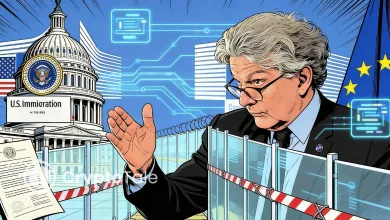Jury Deadlock Leads to Mistrial in MEV Bot Fraud Case

- Jury deadlock forces mistrial in $25M MEV bot fraud case involving MIT brothers.
- Prosecutors claimed the pair used MEV bots to deceive Ethereum traders for profit.
- Defense argued their actions were legal, calling it competitive blockchain trading.
A New York jury failed to reach a verdict in the high-profile trial of MIT-educated brothers Anton and James Peraire-Bueno, accused of orchestrating a $25 million Ethereum exploit in 2023. After three weeks of testimony and conflicting arguments, U.S. District Judge Jessica Clarke declared a mistrial on Friday, sending jurors home after days of deliberation without a consensus.
MIT Brothers Fraud and Money Laundering Charges
According to Inner City Press, prosecutors accused the Peraire-Buenos of executing a “bait-and-switch” scheme through a complex blockchain manipulation. The brothers allegedly used maximal extractable value (MEV) bots to deceive other Ethereum traders. The automated bots allowed them to front-run and reorder blockchain transactions for profit.
Prosecutors claimed the pair spent months planning the exploit, which took just 12 seconds to complete. Assistant U.S. Attorney Ryan Nees described the operation as a calculated trap targeting other traders’ bots. He told jurors the brothers disguised themselves as legitimate MEV-Boost validators, enabling them to reroute and capture digital assets.
“Bait and switch is not a trading strategy,” Nees said during closing arguments. “It is fraud, it is cheating, it is rigging the system.” The prosecution maintained that the brothers knew the consequences of their actions and researched potential legal risks before executing the plan.
EV Trading Was Competitive, Not Criminal
Defense attorneys countered that the Peraire-Buenos operated within the rules of a competitive crypto market. They compared the trade to “stealing a base in baseball,” arguing that it was a clever strategy, not deception. Defense lawyer Katherine Trefz of Williams & Connolly described the brothers as “true nerds” drawn to the technical and competitive nature of blockchain trading.
Trefz explained that the pair began trading cryptocurrencies on Ethereum in 2021, building their first node from spare computer parts in an MIT apartment. She emphasized that their methods reflected innovation, not criminal intent. The brothers, she said, engaged in legitimate trading tactics that exploited inefficiencies already present in decentralized finance systems.
Anton’s defense attorney, William Fick, supported this argument, stating the brothers used their startup, 18 Decimals, to counter predatory trading bots that performed sandwich attacks on other traders. He added that their intention was to challenge unfair trading behaviors in the crypto ecosystem rather than exploit others for personal gain.
Related: UK Eyes $6.7B Bitcoin Seizure in Historic Crypto Fraud Trial
Case Splits Crypto Industry on MEV Legality
The mistrial has deepened a legal debate within the crypto industry over how MEV-related activities should be treated under U.S. law. Prosecutors framed the brothers’ conduct as criminal fraud, while defense attorneys described it as aggressive trading in an unregulated environment. The distinction could shape how blockchain exploits are interpreted in future legal cases.
Crypto advocacy group Coin Center weighed in earlier this week, filing an amicus brief after prosecutors opposed its position. The organization argued that the government’s interpretation of the case could set a dangerous precedent for blockchain innovation.
Carl Volz, a partner at Gunnercooke law firm, supported similar concerns. “I don’t think what’s in the indictment constitutes wire fraud,” he said. “A jury could conclude differently, but if it does, it’ll be because the brothers googled stupidly and talked too much, for too long, with the wrong people.”
The Department of Justice first announced the charges on May 15, 2025, through U.S. Attorney Damian Williams. Prosecutors said the brothers used knowledge gained from their studies at the Massachusetts Institute of Technology to exploit weaknesses in Ethereum’s MEV-boost software, a system most validators rely on to confirm transactions.
Though jurors could not reach an agreement, the case marked one of the first federal prosecutions involving MEV-related blockchain activity. The outcome leaves open critical questions about where competitive trading ends and criminal manipulation begins.
The Peraire-Buenos mistrial shows the legal uncertainty surrounding blockchain operations that exploit system design rather than traditional financial loopholes. Judge Clarke’s ruling opens the way for prosecutors to pursue a retrial, as the debate over the legality of MEV trading continues to divide regulators, developers, and crypto advocates.




